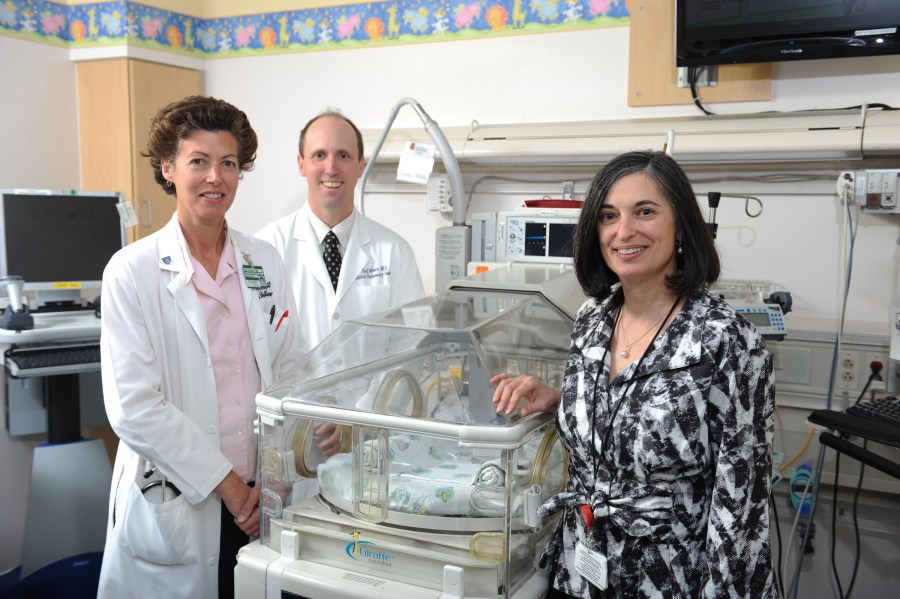
Tina Hartert, M.D., left, Paul Moore, M.D., Judy Aschner, M.D., and colleagues are studying lung disease in premature infants. (photo by Joe Howell)
Study seeks clues to premature lung disease
Vanderbilt University Medical Center researchers will soon begin work to unravel the mysteries behind an increasingly common and deadly form of lung disease in premature infants.
Judy Aschner, M.D., director of the Division of Neonatology, is principal investigator for a $2.4 million, five-year UO1 research grant from the National Institutes of Health, National Heart, Lung and Blood Institute (NHLBI).
The study, which is entitled “Improving Prematurity-related Respiratory Outcomes at Vanderbilt” (IMPROV), will follow 250 premature infants at Vanderbilt and Jackson-Madison County General Hospital through their first year of life.
Every year, 10,000 to 15,000 premature infants in the United States develop a serious lung condition call bronchopulmonary dysplasia (BPD).
The disease is closely associated with prolonged use of a mechanical ventilator in the smallest of premature infants.
Aschner says IMPROV will search for genes associated with BPD as well as biomarkers in the blood, urine or other body fluids that may help predict which babies are at higher risk for the disease. She also hopes to examine evidence suggesting that lung damage in some of these infants may be caused by the very air they breathe.
“The oxygen level in a baby's blood while they are in utero is actually very low, so when a baby is delivered, even room air exposes them to a much higher level of oxygen,” Aschner said.
The human body's natural antioxidant systems protect tissues from the potential damage that oxygen can cause. These systems use enzymes to convert toxic forms of oxygen into harmless oxygen gas and water, but Aschner suspects the lungs of premature infants may be caught unprotected.
“A premature infant has not had time to fully develop the mechanisms within the lungs to deal with higher levels of oxygen,” Aschner says.
Aschner will work with three other principal investigators: Tina Hartert, M.D., M.P.H., associate professor of Medicine and director of the Center for Asthma and Environmental Health Research; Paul Moore, M.D., chief of the Division of Pediatric Pulmonology; and Marshall Summar, M.D., chief of the Division of Genetics and Metabolism at Children's National Medical Center in Washington, D.C., who was formerly director of Vanderbilt's Program in Translational Genetics.
In addition to searching for biomarkers and genes associated with the development of BPD, Aschner hopes to investigate the potential benefits premature infants could reap from nutrition-based supplements that boost antioxidant protection or limit the production of toxic forms of oxygen in the lungs.
Moore, medical director of the BPD clinic at the Monroe Carell Jr. Children's Hospital at Vanderbilt, said he hopes this work will finally help identify targeted therapies for babies at the highest risk.
“We often think about the care of adults in this new era of personalized medicine, but we may be able to personalize treatment for the tiniest babies, recognizing the best treatments and reducing risk as much as possible,” Moore said.
Hartert, who studies the growing incidence of asthma in the pediatric population, hopes this work will help doctors better understand the known link between BPD and asthma in older children.
Aschner is the Julia Carell Stadler Professor of Neonatology.













